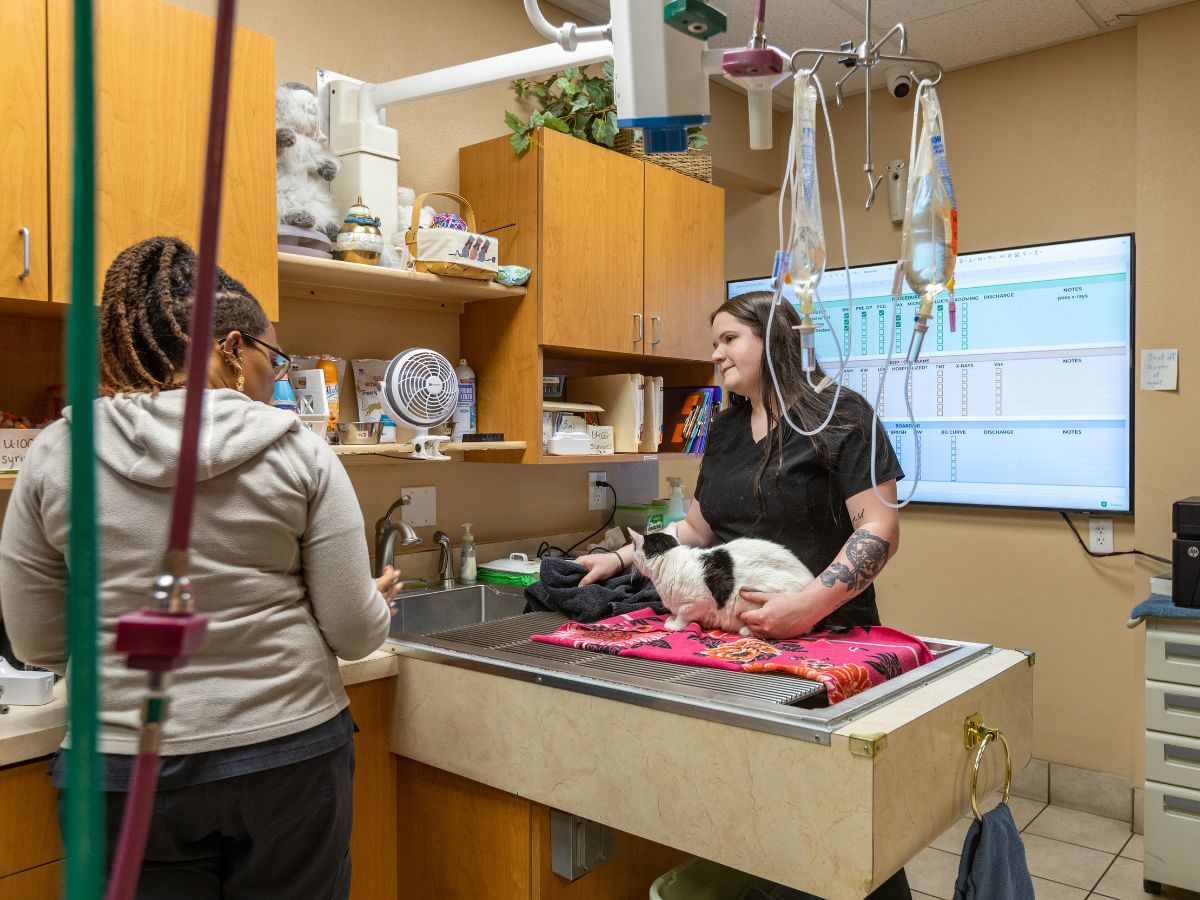Declawing
During a cat’s declaw, veterinarians remove only the claw and the tip of the bone from which the claw grows.
Cat Declawing
Cat declawing can be a controversial procedure, and as such, it is important to have the facts so you can make the best decision for your cat.
Cat declawing is a surgical procedure by which vets remove the cat’s claw and the part of the toe bone out of which the claw grows. If the tiny piece of bone at the end of the cat’s toe is not removed, the claw could try to grow back, causing complications. The cat declaw procedure is typically performed to correct behavior problems involving scratching furniture or people. The vets at A Cat Hospital recommend keeping declawed cats indoors.
What You Need to Know About Cat Declaw
A cat’s toe is not like a dog’s or a human’s toe. The pad of the toe is similar to the middle section of the human finger. At the end of the cat’s toe is a small bone, and out of that bone grows the cat’s claw. The retracted claw and bone, which are not used for walking and touching, are typically hidden beneath the cat’s fur.
Cats scratch in order to sharpen their claws, stretch their bodies, and exercise their muscles. When a cat that has not been declawed scratches, it pulls off the outer layer of its claw, leaving the new, sharper growth behind. While many owners depend on trimming a cat’s claws to prevent scratch injuries to members of the household or to try and mitigate damage to furniture, trimming a cat’s claws often only makes it want to scratch more, to re-sharpen its claws.
While some cats can be trained not to scratch furniture, other cats cannot. Cat declawing may be the only way to keep the cat from damaging furniture. Most vets will agree that declawing a cat is definitely preferable to surrendering that cat to an animal shelter, where it has about a 90 percent chance of being euthanized after it fails to find a new home.
Declawing a cat is also preferable to making a furniture-scratching cat into an outdoor-only cat; an indoor cat with claws is often, unfortunately, thrown outside. The declawed indoor cat will be protected from dogs, cat fights, and car injuries, nor will it experience cold, extreme heat, or loneliness. In addition, declawed indoor cats will not be exposed to contagious diseases that outdoor cats encounter.
Cats with Arthritis and aging cats commonly have nails that are growing into their pads. This can cause quite a bit of pain for your cat, and that pain can translate into other areas of their daily activities, such as when walking or using scratching posts.
During a cat’s declaw, veterinarians remove only the claw and the tip of the bone from which the claw grows. The entire pad of the toe is left intact to speed recovery. When the cat declaws procedure is performed in this way, the surgical wounds heal rapidly, and the cat is able to walk comfortably again within about a week. The cat does not need its claws for walking, running, playing, jumping, or climbing. Cats use their claws only for scratching.
While many cat owners have cats declawed because of behavioral issues, other reasons for a cat declaw include the removal of a tumor in the area or to protect an elderly or immunocompromised owner from the risk of cat scratches that could easily become infected.


